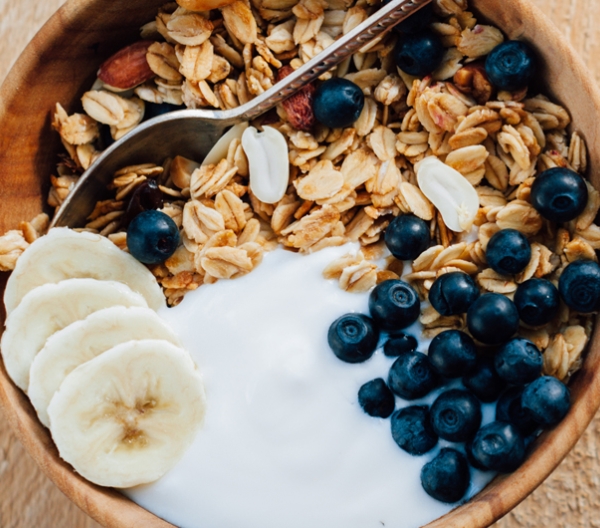Do fermented foods or fiber improve your gut microbes?
“What’s uncomplicated—and pretty much indisputable at this point—is that working live cultures into your diet can be an asset,” proclaims goop.com. “Regularly eating fermented foods such as yogurt, kefir, sauerkraut, and kimchi can help support a healthy gut.”
“Indisputable”? Not quite.
Fermented foods are made by combining milk, vegetables, or other ingredients with yeast or bacteria. Until last year, few well-designed studies had put fermented foods to the test.
“I ran this study with my colleagues Justin and Erica Sonnenburg, who just wanted to look at fiber,” says Christopher Gardner, professor of medicine at the Stanford University School of Medicine. “Their studies on mice had shown that fiber was king for improving microbial diversity.”
Low microbial diversity has been linked to a higher risk of obesity, type 2 diabetes, inflammatory bowel disease, and more, though something else about people with a narrow range of bacteria in their gut could explain their higher risk.
“But I said that the world seems convinced that we need both fiber and fermented foods,” says Gardner. “Wouldn’t you want to compare them?”
Should you eat more fermented foods?
So Gardner and his team randomly assigned 36 healthy adults to eat a diet high in fiber or fermented foods. The fiber group’s goal: Eat 20 more grams a day of fiber than they did before they entered the study.
“We asked them to eat as many beans, veggies, fruits, and whole grains as they could,” says Gardner.
The fermented group’s goal: Eat six servings of fermented foods every day.
“A cup of kimchi or sauerkraut is two servings, a bottle of kombucha that you buy at the store is about two and a half servings, and six ounces of yogurt or kefir is one serving,” explains Gardner. “It’s a lot, but it’s doable.”
After 10 weeks, microbial diversity increased in the fermented food eaters, but didn’t change in the fiber eaters.
Why would fiber boost microbial diversity? In theory, gut bacteria gobble up some types of fiber as food, allowing them to multiply.
But that didn’t happen.
How fiber and fermented foods affect the microbiome
“We looked at fermentable fibers in stool samples,” says Gardner. “If you eat this fiber and your microbes use it as fuel, you shouldn’t see the fiber in the stool. But we saw a lot of the fiber in the stool of some of the volunteers, so those people don’t seem to have the microbes to deal with this extra fiber.”
Those were exploratory—that is, unplanned—outcomes, so they need to be confirmed in a future study. It’s also possible that the study didn’t last long enough to see an effect of fiber on the microbiome.
Another surprise: The vast majority of the new bacteria in the volunteers’ guts didn’t come from their food.
“We bought the products that the study participants were eating and cataloged their bacteria,” says Gardner. “Only 5 percent of the new bacteria in the volunteers’ guts matched the foods they were eating.”
So where did their new gut bacteria come from? “That’s a bigger surprise that we can’t explain,” says Gardner.
“Maybe the increase in diversity was coming from some bacteria that were at sub-detectable levels at the beginning of the study. Maybe we changed the environment of the gut, and all of a sudden they bloomed. But it wasn’t from the yogurt. And it wasn’t from the kimchi. It was from something else.”
What to do
Gardner isn’t encouraging people to revamp their diet based on his findings.
For one thing, “we need evidence that microbial diversity actually lowers the risk of chronic disease,” he points out.
Gardner’s bottom line: “These results are exciting. They’ve generated new questions for what to look into next. But they’re not ready for prime time. We don’t yet have our heads wrapped around how diet influences the microbiome and what that means for health.”
Support CSPI today
As a nonprofit organization that takes no donations from industry or government, CSPI relies on the support of donors to continue our work in securing a safe, nutritious, and transparent food system. Every donation—no matter how small—helps CSPI continue improving food access, removing harmful additives, strengthening food safety, conducting and reviewing research, and reforming food labeling.
Please support CSPI today, and consider contributing monthly. Thank you.
Tags
Topics
Continue reading this article with a NutritionAction subscription
Already a subscriber? Log in
More common questions about GI health

STAY IN TOUCH
Our best (free) healthy tips
Our free Healthy Tips newsletter offers a peek at what Nutrition Action subscribers get—healthy recipes, scrupulously researched advice about food of all kinds, staying healthy with diet and exercise, and more.

